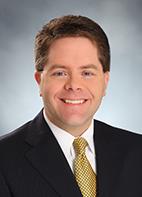 A top U.S. patent court delivered a ruling yesterday clarifying what types of innovations can be patented. Many anti-patent groups took the ruling, called In re Bilski, as good news. It specified that an invention must entail some form of “machine or transformation,” and it excluded a number of business method patents. But the legal world is still trying to get its head around the implications, and pro-patent lawyers are already spotting loopholes.
A top U.S. patent court delivered a ruling yesterday clarifying what types of innovations can be patented. Many anti-patent groups took the ruling, called In re Bilski, as good news. It specified that an invention must entail some form of “machine or transformation,” and it excluded a number of business method patents. But the legal world is still trying to get its head around the implications, and pro-patent lawyers are already spotting loopholes.
So what is a patent-holding tech company to do?
“If your patent doesn’t have anyone with a Bachelor of Science on it, you might have a problem,” says John Dragseth, a principal at law firm Fish & Richardson. Patents that involve technology, however, are far likelier to stand up under scrutiny, he tells me. The financial services industry will probably be the most affected, with the software and medical technology industries a distant second and third. He advises technology patent holders to go back and check the wording of their patents to make sure they won’t be affected.
Fish & Richardson, a top intellectual property law firm that represents roughly equal numbers of patent plaintiffs and defendants, has also published an in-depth analysis written by Dragseth, available here. Excerpts from the conclusion, below:
AI Weekly
The must-read newsletter for AI and Big Data industry written by Khari Johnson, Kyle Wiggers, and Seth Colaner.
Included with VentureBeat Insider and VentureBeat VIP memberships.
The Federal Circuit purposefully left many points open in its opinion, such as the meaning of “physical” transformation, what it means for a machine to impose “meaningful limits” on the scope of a process, what it means for a transformation to be “central to the purpose of the claimed process,” and what is or is not “insignificant post-solution activity,” “mere data gathering,” and “nominal recitation of structure.” The effect of this decision may likely be muted by two main points: (1) the Patent Office has not been issuing many (if any) “pure” business method claims for a long time; and (2) the Federal Circuit was careful to cabin the reach of its holding even if the words it chose or its tests are not the clearest in the world.
Clients with issued software patents, medical method patents, and other similar patents may want to run a “Bilski test” on the claims of those patents, particularly if there is a likelihood that the patents will be asserted in the future. If those patents raise any concerns, it may be advisable to correct potential problems or insure against them (e.g., by adding new, more-patentable claims) via reissue proceedings or continuation practice.
[Photo of Dragseth via Fish & Richardson]
VentureBeat's mission is to be a digital town square for technical decision-makers to gain knowledge about transformative enterprise technology and transact. Learn More